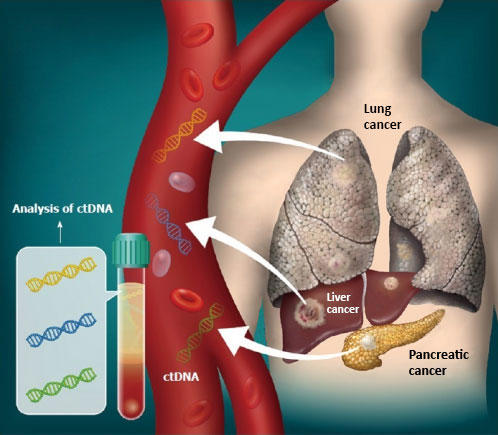- The IMF Executive Board completed the Third Review under the 48-month Extended Fund Facility with Sri Lanka, providing the country with immediate access to SDR 254 million (about US $334 million) to support its economic policies and reforms.
- Performance under the program has been strong. All quantitative targets for end-December 2024 were met, except the indicative target on social spending. Most structural benchmarks due by end-January 2025 were either met or implemented with delay. The recent successful completion of the bond exchange is a major milestone towards restoring debt sustainability.
- Reform efforts are bearing fruit with the recovery gaining momentum. As the economy is still vulnerable, sustaining the reform agenda is critical to put the economy on a path towards lasting recovery and debt sustainability.
Washington, DC: The Executive Board of the International Monetary Fund (IMF) completed the third review under the 48-month Extended Fund Facility (EFF) Arrangement, allowing the authorities to draw SDR 254 million (about US$334 million). This brings the total IMF financial support disbursed so far to SDR 1.02 billion (about US$1.34 billion). [1]
The EFF arrangement for Sri Lanka was approved by the Executive Board on March 20, 2023 (see Press Release No. 23/79) in an amount of SDR 2.286 billion (395 percent of quota or about US$3 billion. The program supports Sri Lanka's efforts to restore and maintain macroeconomic stability and debt sustainability while protecting the poor and vulnerable, rebuild external buffers, and enhance growth-oriented structural reforms including by strengthening governance.
Following the Executive Board discussion on Sri Lanka, Mr. Kenji Okamura, Deputy Managing Director, issued the following statement:
"Reforms in Sri Lanka are bearing fruit and the economic recovery has been remarkable. Inflation remains low, revenue collection is improving, and reserves continue to accumulate. Economic growth averaged 4.3 percent since growth resumed in the third quarter of 2023. By end-2024, Sri Lanka's real GDP is estimated to have recovered 40 percent of its loss incurred between 2018 and 2023. The recovery is expected to continue in 2025. As the economy is still vulnerable, it is critical to sustain the reform momentum to ensure macroeconomic stability and debt sustainability, and promote long-term inclusive growth. There is no room for policy errors.
"Program performance has been strong with all quantitative targets met, except for the indicative target on social spending. Most structural benchmarks due by end-January 2025 were either met or implemented with delay.
"Sustained revenue mobilization is crucial to restoring fiscal sustainability and ensuring that the government can continue to provide essential services. Boosting tax compliance and refraining from tax exemptions are key to maintaining support for economic reforms. To ease economic hardship and ensure the poor and vulnerable can participate in Sri Lanka's recovery it is important to meet social spending targets and continue with reforms of the social safety net. Going forward, social support needs to be well-targeted towards the most disadvantaged so as to promote inclusive growth with limited fiscal space. Restoring cost-recovery electricity pricing without delay is needed to contain fiscal risks from state-owned enterprises. A smoother execution of capital spending within the fiscal envelope would foster medium-term growth.
"The progress to advance the debt restructuring to restore Sri Lanka's debt sustainability is noteworthy. The recent successful completion of the bond exchange is a major milestone towards restoring debt sustainability. Timely finalization of bilateral agreements with creditors in the Official Creditor Committee and with remaining creditors is a priority now.
"Monetary policy should prioritize maintaining price stability, supported by sustained commitment to prohibit monetary financing and safeguard Central Bank independence. Continued exchange rate flexibility and gradually phasing out the balance of payments measures remain critical to rebuild external buffers and facilitate rebalancing.
"Resolving non-performing loans, strengthening governance and oversight of state-owned banks, and improving the insolvency and resolution frameworks are important priorities to revive credit growth and support the economic recovery.
"Prolonged structural challenges need to be addressed to unlock Sri Lanka's long-term potential, including steadfast implementation of the governance reforms."
Sri Lanka: Selected Economic Indicators 2022-2030 |
|||||||||||||||||||||||||||||||||||||||||||||||||||||||||||||||||||||||||||||||||||||||||||||||||||||||||||||||||||||||||||||||||||||||||||||||||||||||||||||||||||||||||||||||||||||||||||||||||||||||||||||||||||||||||||||||||||||||||||||||||||||||||||||||||||||||||||||||||||||||||||||||||||||||||||||||||||||||||||||||||||||||||||||||||||||||||||||||||||||||||||||||||||||||||||||||||||||||||||||||||||||||||||||||||||||||||||||||||||||||||||||||||||||||||||||||||||||||||||||||||||||||||||||||||||||||||||||||||||||||||||||||||||||||||||||||||||||||||||||||||||||||||||||||||||||||||||||||||||||||||||||||||||||||||||||||||||||||||||||||||||||||||||||||||||||||||||||||||||||||||||||||||||||||||||||||||||||||||||||||||||||||||||||||||||||||||||||||||||||||||||||||||||||||||||||||||||||||||||||||||||||||||||||||||||||||||||||||||||||||||||||||||||||||||||||||||||||||||||||||||||||||||||||||||||||||||||||||||||||||||||||||||||||||||||||||||||||||||||||||||||||||||||||||||||||||||||||||||||||||
2/ Comprising central government debt, publicly guaranteed debt, and CBSL external liabilities (i.e., Fund credit outstanding and international currency swap arrangements). The debt statistics currently assume the external debt restructuring to have been completed at end 2023. 3/ Excluding PBOC swap ($1.4bn in 2022) which becomes usable once GIR rise above 3 months of previous year's import cover. |
|||||||||||||||||||||||||||||||||||||||||||||||||||||||||||||||||||||||||||||||||||||||||||||||||||||||||||||||||||||||||||||||||||||||||||||||||||||||||||||||||||||||||||||||||||||||||||||||||||||||||||||||||||||||||||||||||||||||||||||||||||||||||||||||||||||||||||||||||||||||||||||||||||||||||||||||||||||||||||||||||||||||||||||||||||||||||||||||||||||||||||||||||||||||||||||||||||||||||||||||||||||||||||||||||||||||||||||||||||||||||||||||||||||||||||||||||||||||||||||||||||||||||||||||||||||||||||||||||||||||||||||||||||||||||||||||||||||||||||||||||||||||||||||||||||||||||||||||||||||||||||||||||||||||||||||||||||||||||||||||||||||||||||||||||||||||||||||||||||||||||||||||||||||||||||||||||||||||||||||||||||||||||||||||||||||||||||||||||||||||||||||||||||||||||||||||||||||||||||||||||||||||||||||||||||||||||||||||||||||||||||||||||||||||||||||||||||||||||||||||||||||||||||||||||||||||||||||||||||||||||||||||||||||||||||||||||||||||||||||||||||||||||||||||||||||||||||||||||||||||
[1] SDR figures are converted at the market rate of U.S. dollar per SDR on the day of the Board approval.






